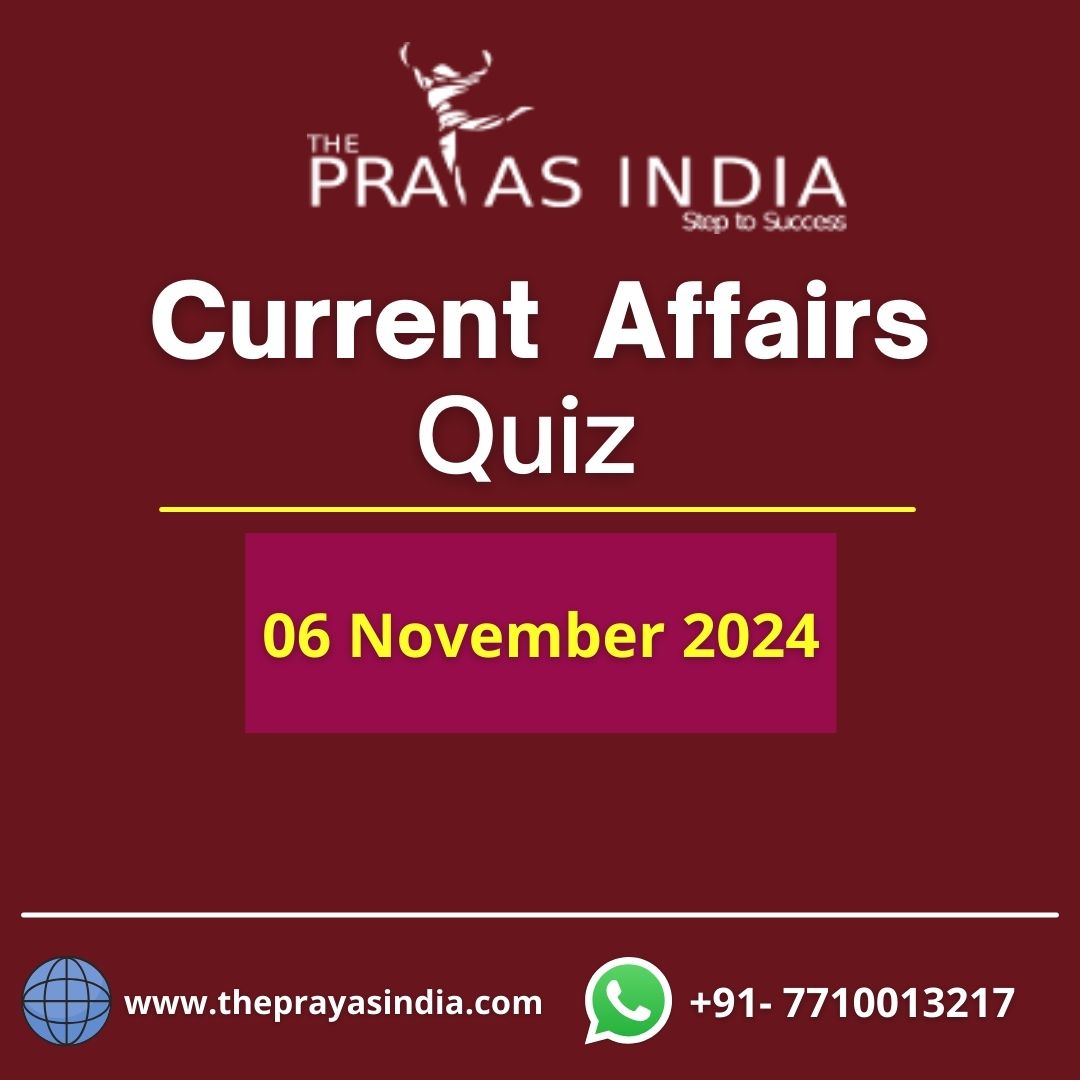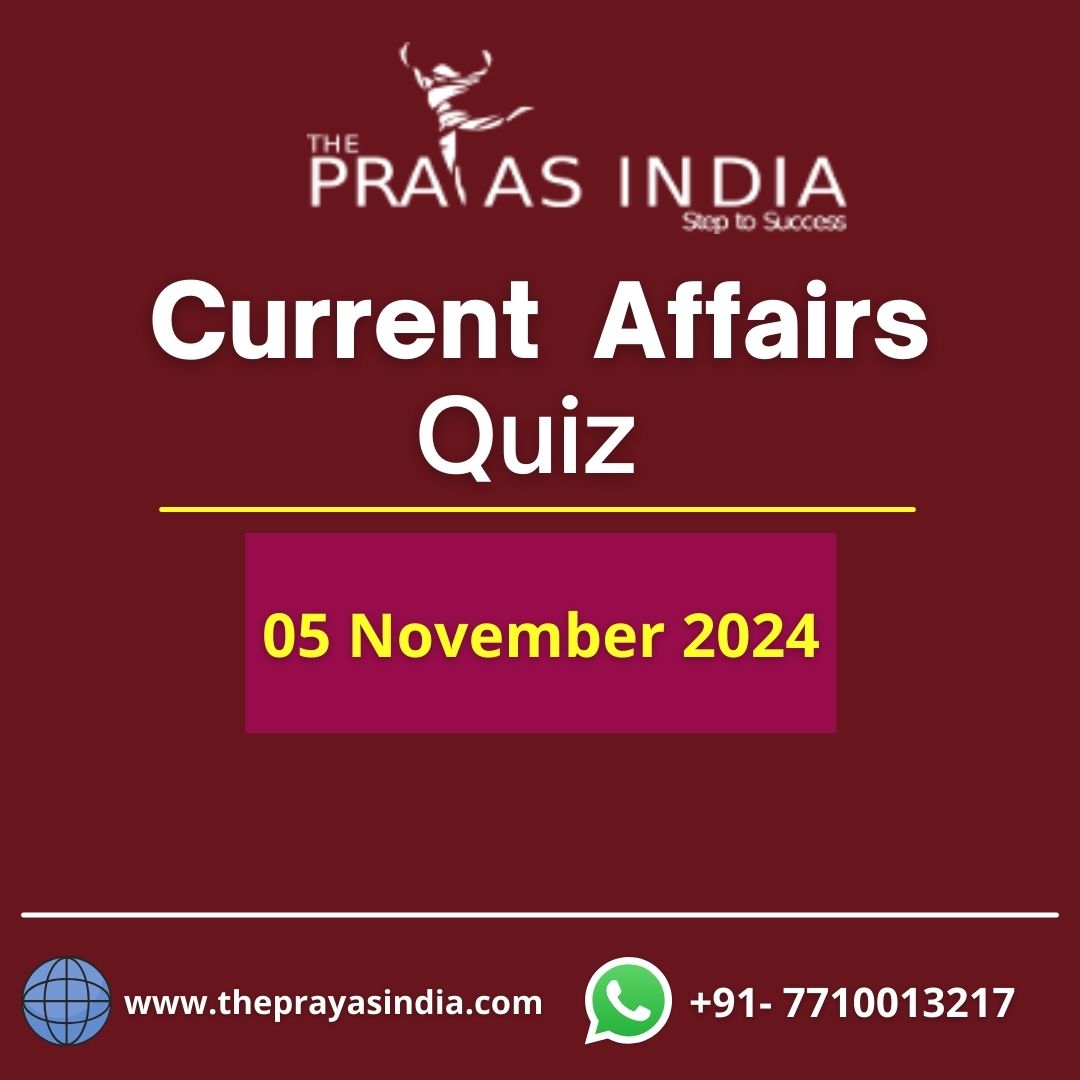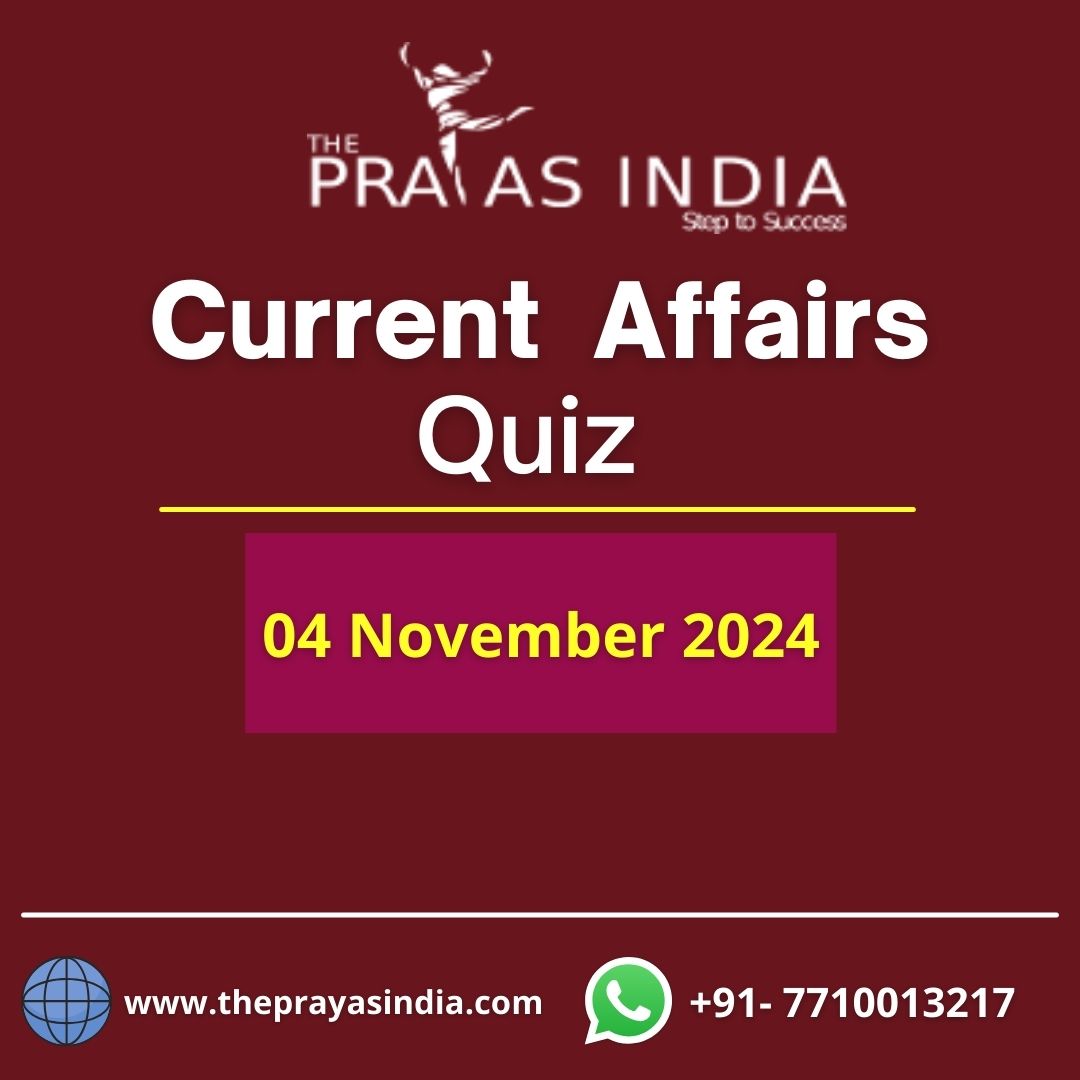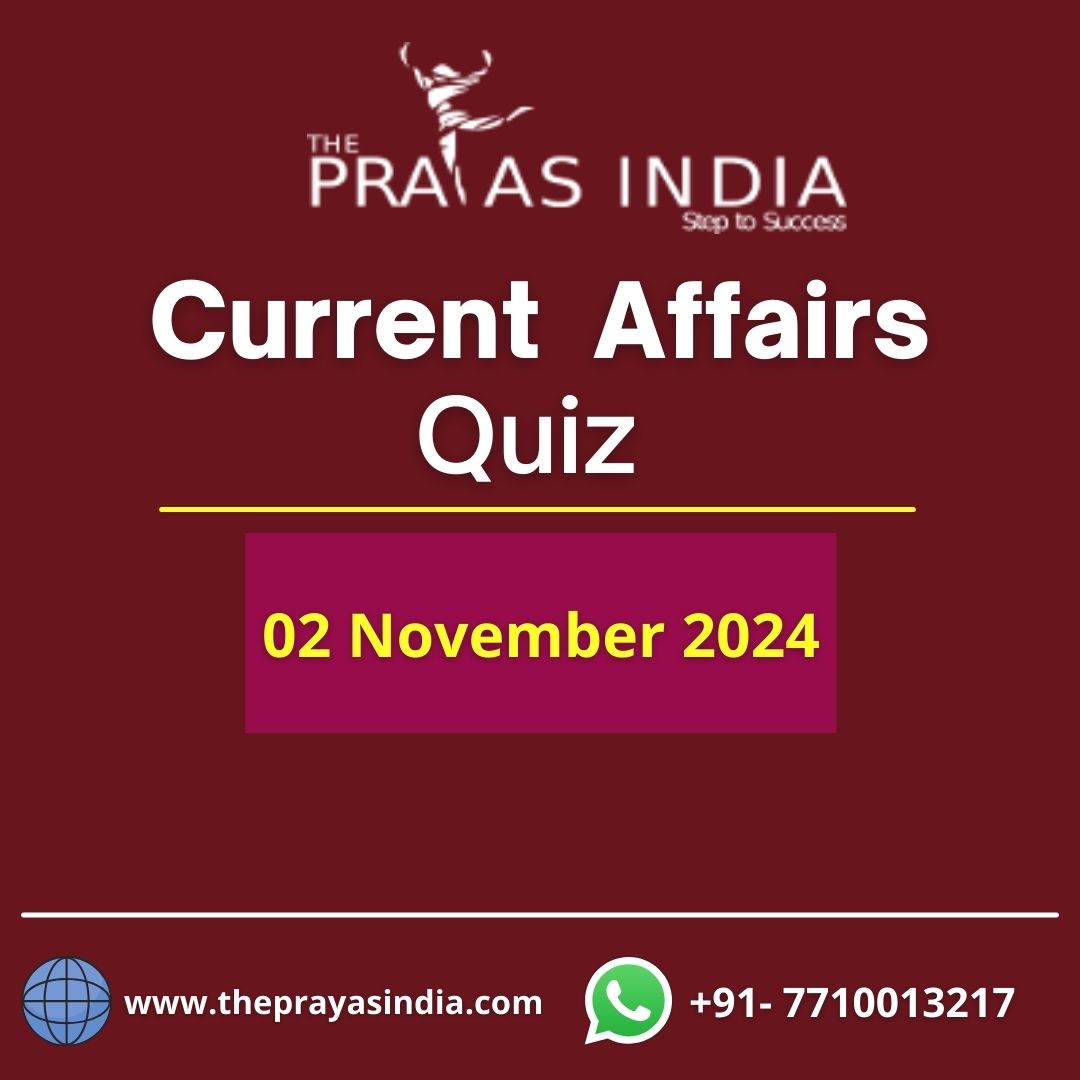Q. Take into account the following statements about exclusive economic zones:
- A zone in the sea designated by the United Nations Convention on the Law of the Sea is known as an Exclusive Economic Zone (EEZ) (UNCLOS)
- It typically reaches a distance of 200 nautical miles from land.
- The coastal state has the authority to explore and exploit, as well as the duty to protect and manage, both living and non-living resources, within the EEZ.
- It belongs to the state as a sovereign territory.
Which of the aforementioned statements is true?
- 1, 2 and 3
- 2, 3 and 4
- 1, 3 and 4
- 1, 2, 3 and 4
A – Explanation
- The first three statements are true.
- An exclusive economic zone (EEZ) is defined by the United Nations Convention on the Law of the Sea (UNCLOS) as a region that, generally speaking, extends 200 nautical miles from the coast and in which the coastal state has the right to explore and exploit as well as the duty to conserve and manage both living and non-living resources.
- The fourth statement is untrue.
- The EEZ exclusively permits resource rights, in contrast to the territorial sea and the contiguous zone. With very few exceptions, it does not grant a coastal state the authority to forbid or restrict the freedom of navigation or overflight.
- A coastal State assumes jurisdiction over the exploration and exploitation of marine resources in its adjacent section of the continental shelf, which is defined as a band extending 200 miles from the shore, under the Exclusive Economic Zone (EEZ) concept, which was adopted at the Third United Nations Conference on the Law of the Sea (1982).
Q. Which of the following nations is the Dnieper River located in?
- Germany
- Ukraine
- France
- Russia
B – Explanation
- The administrative hub of Kherson Oblast is the Ukrainian port city of Kherson.
- Kherson, a significant shipbuilding hub and regional commercial hub, is situated on the Black Sea and the Dnieper River.
- Russia took control of it. Russian troops have left Kherson, allowing the Ukrainian army to reclaim some of the city.
Q. Take into account the following statements on monkey pox:
- It’s a zoonotic disease, monkeypox.
- It is brought on by the orthopoxvirus known as the monkeypox virus.
Which of the aforementioned statements is/are false?
- 1 only
- 2 only
- Both 1 and 2
- Neither 1 nor 2
D – Explanation
- Both of the statements are true.
- A zoonosis is a disease that can spread from animals to people, such as monkeypox. Near tropical rainforests, where the virus-carrying animals live, cases are frequently discovered.
- Squirrels, rats taken from Gambian slums, dormice, various monkey species, and other animals have all shown signs of monkeypox virus infection.
- A rare condition known as monkeypox is brought on by infection with the monkeypox virus. The Orthopoxvirus genus is part of the Poxviridae family, which includes the monkeypox virus.
- The variola virus, which causes smallpox, the vaccinia virus, which is used in the smallpox vaccine, and the cowpox virus are all members of the orthopoxvirus genus.
- Two outbreaks of a disease resembling the pox occurred in colonies of monkeys held for research in 1958, giving rise to the term “monkeypox,” which was then coined.
Q. Take into consideration what is said about the United Nations Convention on the Law of the Sea (UNCLOS):
- It is the only international agreement that lays out a foundation for sovereign authority in maritime areas.
- It is a specialised UN agency.
- The UNCLOS established the International Seabed Authority (ISA) and the International Tribunal for the Law of the Sea (ITLOS).
Which of the aforementioned statements is true?
- 1 and 2 only
- 2 and 3 only
- 1 and 3 only
- 1, 2 and 3
C – Explanation
- The first statement is true.
- An international agreement from 1982 known as the United Nations Convention on the Law of the Sea (UNCLOS) lays out the legal guidelines for marine and maritime operations.
- It also goes by the name “Law of the Sea.”
- It divides marine areas into five main zones: the High Seas, Exclusive Economic Zone (EEZ), Contiguous Zone, Territorial Sea, and Internal Waters.
- It is the only international agreement that lays out a foundation for sovereign authority in maritime areas. It gives certain maritime zones various legal statuses.
- It serves as the framework for offshore governance among coastal nations and seafarers.
- The second claim is untrue.
- UNCLOS is not a department inside the UN.
- A specialised UN organisation is the International Seabed Authority.
- The third statement is true.
- The International Seabed Authority (ISA) was created to coordinate, manage, and oversee all mineral-related activities in the international seabed region (also known as “the Area”), which lies beneath the majority of the world’s seas and is outside the purview of state sovereignty.
- The Third United Nations Conference on the Law of the Sea established the International Tribunal for the Law of the Sea (ITLOS) as an intergovernmental body.
Q. Take into account the following statements about the Global Dashboard for Vaccine Equity:
- The OECD, WHO, and University of Oxford are working together on it, and the entire UN system is supporting it.
- It demonstrates the significance of accelerating vaccination equity by fusing the most recent socioeconomic data with the most recent COVID-19 vaccine data.
Which of the aforementioned statements is true?
- 1 only
- 2 only
- Both 1 and 2
- Neither 1 nor 2
B – Explanation
- The first claim is untrue.
- The World Health Organization (WHO), the University of Oxford, and the United Nations Development Programme (UNDP) collaborated to create the Global Dashboard for Vaccine Equity.
- The second claim is true.
- It combines “the most recent socio-economic information” with the “latest statistics on the global roll-out of COVID-19 vaccines to explain why accelerating vaccine equity is not only vital to ensuring a speedier and fairer recovery from the pandemic with benefits for all.”
- Vaccine equity states that, regardless of a country’s economic standing, vaccines should be distributed across all nations depending on need. The distribution and access to vaccinations ought to be guided by the idea that everyone has the right to the best possible level of health, regardless of their race, religion, political beliefs, level of income, or other social circumstance.
Q. Take into account the Vaccine Delivery Partnership for COVID-19 (COVAX) statements:
- The World Health Organization, Gavi, and the Coalition for Epidemic Preparedness Innovations (CEPI) jointly lead it (WHO).
- Its objectives include quickening the development and production of COVID-19 vaccines and ensuring fair and equal access for all nations worldwide.
Which of the aforementioned statements is true?
- 1 only
- 2 only
- Both 1 and 2
- Neither 1 nor 2
C – Explanation:
- The truth of both statements 1 and 2 can be proven.
- The Access to COVID-19 Tools (ACT) Accelerator’s COVAX division focuses on vaccinations. The ACT Accelerator is an innovative international partnership that will hasten the creation of COVID-19 diagnostics, therapies, and vaccinations as well as their equal access.
- The Coalition for Epidemic Preparedness Innovations (CEPI), Gavi, the World Health Organization (WHO), and crucial delivery partner UNICEF are all co-leading COVAX.
- Its objectives include quickening the development and production of COVID-19 vaccines and ensuring fair and equal access for all nations worldwide.
- An worldwide collaboration with “One Country Team,” “One Plan,” and “One Budget” is the COVID-19 Vaccine Delivery Partnership (COVAX).
Q. Which of the following fields is relevant to the Gati Shakti scheme?
- Infrastructure for education
- Infrastructure for energy
- Infrastructure for water resource management
- 1 and 2 only
- 2 and 3 only
- 1 and 3 only
- 1, 2 and 3
D – Explanation:
- The ambitious Gati Shakti initiative, also known as the National Master Plan for Multi-Modal Connectivity, was established by the Indian government with the goal of coordinating the design and implementation of infrastructure projects in order to reduce logistics costs.
- It is a comprehensive national strategy for building infrastructure to propel India into the twenty-first century.
- The National Infrastructure Pipeline, which was introduced in 2019 and cost Rs 110 lakh crore, would be absorbed by the Gati Shakti scheme.
- It plans to bring together 16 Ministries involved in infrastructure.
- Long-standing difficulties including haphazard planning, a lack of standardisation, difficulty with permissions, and the timely building and utilisation of infrastructure capacities would all be helped by this.
- The programme complements the National Monetization Pipeline (NMP). The NMP has been announced to give potential investors a ready list of assets to spark interest in investments and to provide a clear framework for monetisation.
Q. Which of the following states or UTs is the location of the Jhula Bailey Suspension Bridge?
- Gujarat
- J & K
- Rajasthan
- Bihar
B – Explanation
- At Ramban in Jammu and Kashmir, the recently built Jhula Bailey Suspension Bridge, which replaced the earlier one that was deemed unsafe, has been opened to traffic.
- The district administrative complex Maitra Ramban and the historic town of Ramban are connected by the Bailey Suspension Bridge (BSB) over the Chenab River.
Q. Take into account the EMRS (Eklavya Model Residential Schools) statements:
- It was implemented to make sure pupils from scheduled castes had access to high-quality education in rural areas.
- The implementing organisation is the Ministry of Education.
Which of the aforementioned statements is true?
- 1 only
- 2 only
- Both 1 and 2
- Neither 1 nor 2
D – Explanation
- Both of the statements are untrue.
- In order to guarantee that tribal kids have access to a high-quality education in the isolated tribal communities, the EMRS programme was created in 1997–1998.
- The implementing organisation is the Ministry of Tribal Affairs.
- The schools would concentrate on giving ST students in these locations a high-quality upper elementary, secondary, and senior secondary education.
- The EMRSs also include provisions for a playground, a student computer lab, a teacher resource room, and other amenities in addition to school buildings like dormitories and staff quarters.
Q. Take into account the following statements on the Shabd Shala website:
- The Commission for Scientific and Technical Terminology will introduce it (CSTT).
- It will solicit ideas for the translation of terms that have recently entered the English language but are commonly used in India.
Which of the aforementioned statements is true?
- 1 only
- 2 only
- Both 1 and 2
- Neither 1 nor 2
C – Explanation
- Both of the statements are true.
- The Commission for Scientific and Technical Terminology (CSTT), which is charged with developing technical terminology in all Indian languages, will soon launch “Shabd Shala,” a website that will accept suggestions for the translation of words that have recently been added to the English language but are commonly used in India.
- The “Shabd Shala” website allows users from all around India to submit ideas for potential translations of these phrases or their most common usages in their native tongues.




